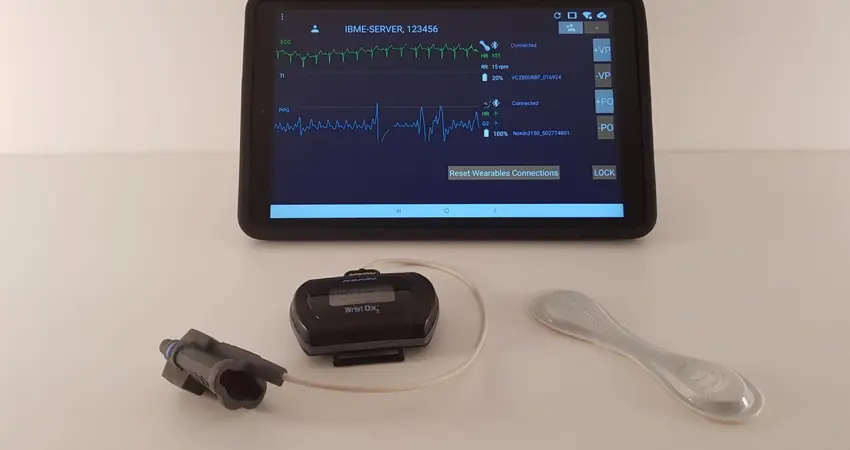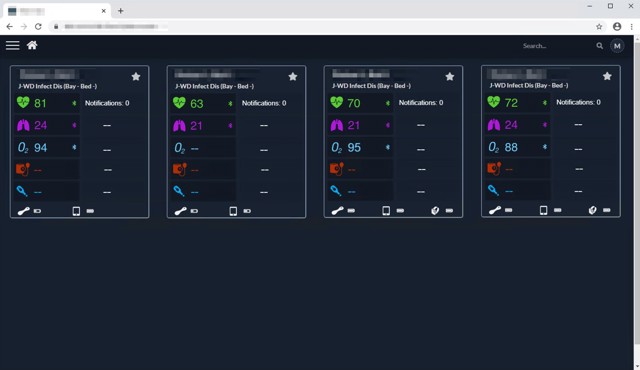01 Apr 2020
Using wearable technology to monitor COVID-19 patients
System being used in John Warin isolation ward at Oxford's John Radcliffe Hospital

Figure 1: A wearable patch (to measure respiratory rate) and wrist-worn pulse oximeter (to measure pulse rate and oxygen saturation), are linked by Bluetooth to a tablet computer
In a Biomedical Research Centre project led by Professor Peter Watkinson (Nuffield Department of Clinical Neurosciences) and Professor Lionel Tarassenko (Institute of Biomedical Engineering, Department of Engineering Science), biomedical engineers and medical researchers have been developing and testing the concept of a virtual High-Dependency Unit (vHDU) for the past 18 months.
A vHDU is a general ward in a hospital in which high-risk patients are monitored using a new generation of wearable sensors measuring pulse rate, respiratory rate and blood oxygen saturation, combined with Bluetooth-linked tablet computers and smart alerting algorithms. The twin aims are to reduce the burden on nursing staff, allowing them to perform vital-sign observations for high-risk patients at the same rate as for lower-risk patients (typically four-hourly), and to improve early detection of abnormal physiological parameters.
It became clear at the end of February that the technology and software developed for the vHDU research project could be adapted for the isolation ward for COVID-19 patients in the John Radcliffe Hospital (John Warin ward). For those COVID-19 patients who do not need to be ventilated, it is important for their recovery that they should continue to remain ambulatory, and so the wearable technology is ideal.
Drs Cristian Roman, Mauro Santos and Marco Pimentel, post-doctoral Research Assistants from the Institute of Biomedical Engineering, worked tirelessly throughout the first three weeks of March to ensure that the modified patient monitoring system could be deployed soon after the opening of the isolation ward. The system went live with its first four ambulatory patients on the John Warin ward on Monday 23rd March.
The processed vital-sign data is made available to the nursing staff outside the isolation rooms using the hospital wi-fi, and is displayed on a dashboard which allows the physiological status of the patients to be tracked in real-time. The pictures show the wearable technology and tablet computer (Figure 1), and the real-time patient status dashboard (Figure 2), edited to remove any patient-identifiable data.
Sarah Vollam, a Critical Care Nurse Researcher, says, “The vHDU system looks fantastic running on the John Warin ward. The biomedical engineers have done an amazing job making the system user-friendly and intuitive, which is key to implementing new technology in a stressful environment. The nurses are very keen to use it to enhance not only their patients’ safety but also their own, by limiting their exposure to the virus”.

Figure 2 – real-time patient status dashboard showing, for four isolated patients on the John Warin ward, the pulse rate values in green, the respiratory rate values in purple and the oxygen saturation values in blue.
Any media enquiries should be directed to comms@eng.ox.ac.uk.




